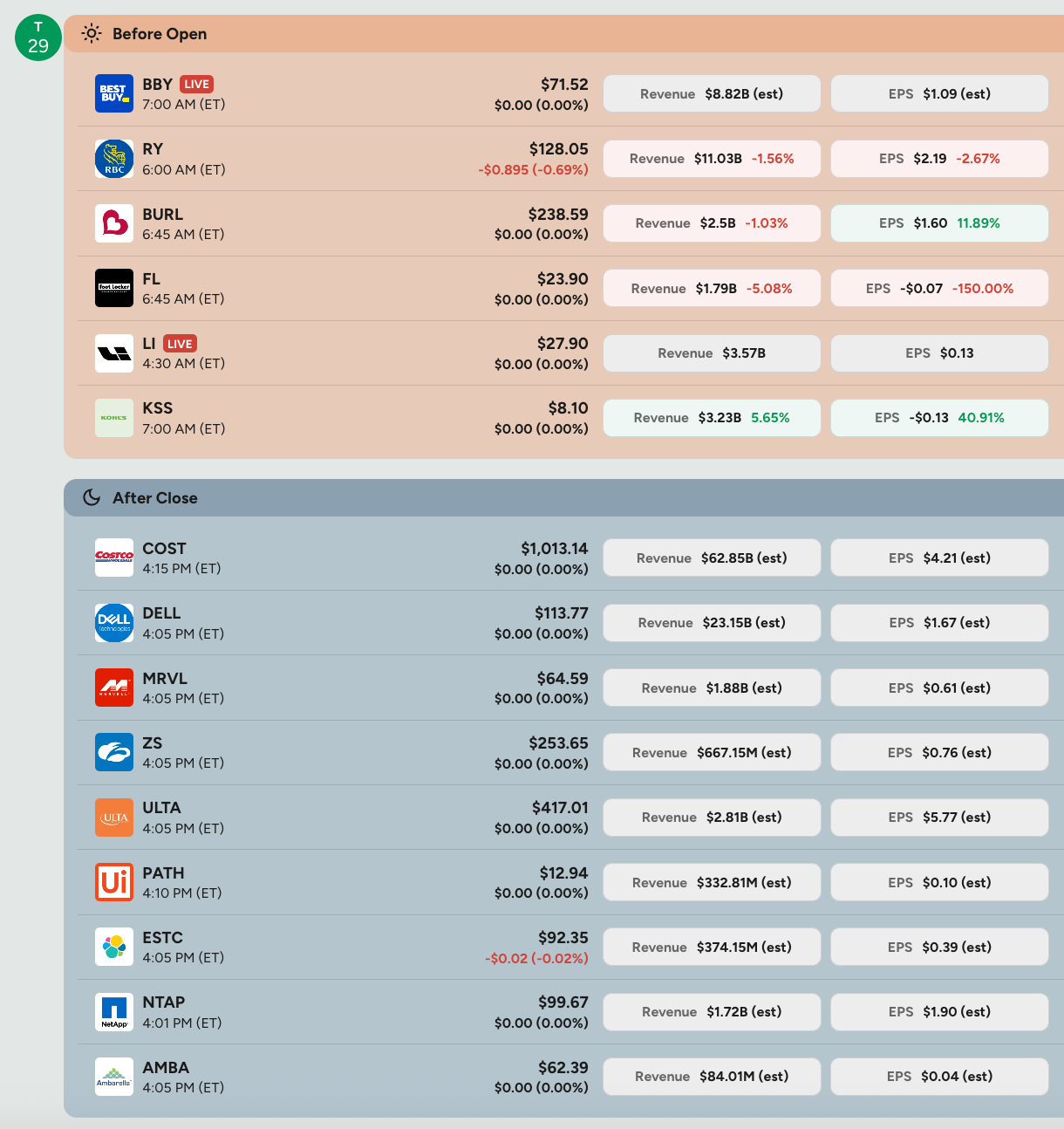Breakfast Bites - Tariff block creates more uncertainty
Tariff workarounds; Nvidia earnings
Rise and shine everyone
Nvidia’s earnings didn’t disappoint, and this pushed US equities significantly higher.
NVIDIA reported strong April-quarter revenue of $44B (above consensus), despite ~$2.5B in lost H20 China shipments and a $4.5B H20 inventory write-down that impacted margins and EPS. (More on this below)
The bigger story this morning though is that the Court of International Trade blocked the tariffs the Trump administration imposed under the International Emergency Economic Powers Act (IEEPA). The ruling blocks the country level tariffs but doesn’t affect the sector tariffs.
The nationwide injunction takes immediate effect, halting tariff collections, requiring refunds for duties already paid, and giving the executive branch 10 days to complete the formal process of ending enforcement.
The first reaction from the market was relief because it signals that there are some checks on the US Administration’s power. It could mean that it has weakened the US administration’s position for imposing baseline tariffs. However, I think this could make matters worse because it increases the uncertainty surrounding tariff negotiations. Appeals have already started to overturn the ruling, and there are other provisions (other than the IEEPA) that the Administration can use to impose tariffs.
A quick search tells me that there are two other legal authorities under which the US Administration could impose tariffs:
Section 122 of the Trade Act of 1974: Lets the President impose short-term tariffs or quotas to address balance of payments issues, like large trade deficits or currency pressures.
Section 301 of the Trade Act of 1974: Allows the U.S. to impose tariffs in response to unfair trade practices or violations of trade agreements by other countries.
Section 232 of the Trade Expansion Act of 1962: Allows the President to impose tariffs or other trade restrictions based on national security concerns.
The bottom line is that the process now becomes more complicated, and negotiations could take much longer than expected.
Nvidia Update
Nvidia’s July-quarter guidance of $45B missed consensus but was better than internal expectations when adjusting for H20 restrictions.
Datacenter revenue grew ~16% Q/Q, supported by demand for AI compute and the ramp-up of the Blackwell platform, including shipments of 1000 NVL72 racks per week.
Networking also saw a sharp revenue inflection.
Notably, recent mega datacenter buildout announcements in the Middle East (UAE and Saudi Arabia) contributed to NVIDIA’s strong forward visibility through CY26, helping reinforce their lead in AI infrastructure.
The stock is trading over 5% higher in the premarket.
Chart of the Day
JPM notes that retail investors have been consistently selling NVDA for 14 consecutive days—the longest streak since 2018—despite strong earnings, with $3.2B in outflows this week. Meanwhile, TSLA saw $432M in net selling but turned positive today; overall, retail exposure to Tech, Discretionary, and the Mag7 has dropped sharply from 10% last summer to around 1.5%.
What We’re Watching
8:30 am - 2nd estimate US 1Q GDP growth
Earnings after the close: Costco, Dell, Marvell, Ulta
Calendars
(news taken from Reuters, FT, Bloomberg; Calendar from Trading Economics)






